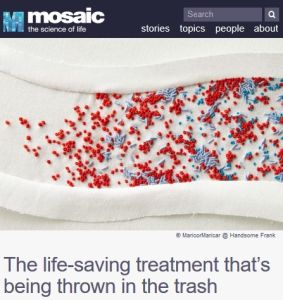
The Life-Saving Treatment That’s Being Thrown in the Trash
Diagnosed with leukaemia in his early 40s, Chris Lihosit was saved by umbilical cord blood from three babies. But why is cord blood banking still the exception rather than the norm?
Recommendation
Bryn Nelson tells the story of a miracle cure that hardly anyone uses. He reports that it’s expensive, that doctors aren’t creating sufficient demand to bring the price down and that insurers aren’t funding it. But why? Since it has numerous potential applications and a sizable body of research supporting its use and it outperforms the alternatives, the lack of popularity is baffling. Whatever the reason, Nelson successfully sells the idea that cord blood shouldn’t just be thrown away. getAbstract recommends his analysis to anyone who loves medical innovation and hates waste.
Summary
About the Author
Bryn Nelson is a Seattle-based freelance writer and editor with an interest in biology, biomedicine, ecology and green technology.








Comment on this summary